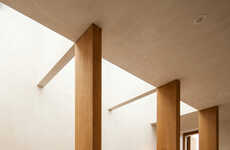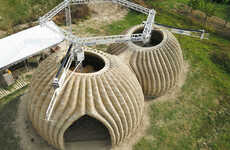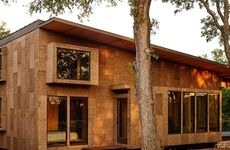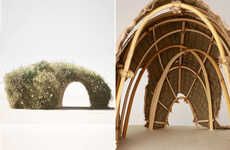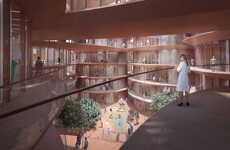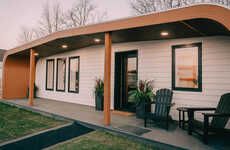
The Walls of This Home in Israel are Made Out of Hemp and Concrete
Mary Van Puymbroeck — July 11, 2017 — Eco
'Tav Group' has built a sustainable house in Israel made with hempcrete walls.
Hempcrete is an ecologically friendly material made out of hemp hurds and lime. It is becoming a popular concrete substitute for those seeking eco-friendly building materials, but this is the first time hempcrete has been used on a building in Israel. Thick layers of earth-based plaster cover the hempcrete walls and rammed earth cover wooden frames. The heavy materials used in the building of this house help keep the home cool due to the increased thermal mass of the building.Throughout the building of this project only environmentally friendly, sustainable, locally sourced and natural materials were used.
Located in 'Eod Hod,' an artists village in Israel's Haifa District, the aim of this project was to build an 'archetype of sustainability.'
Hempcrete is an ecologically friendly material made out of hemp hurds and lime. It is becoming a popular concrete substitute for those seeking eco-friendly building materials, but this is the first time hempcrete has been used on a building in Israel. Thick layers of earth-based plaster cover the hempcrete walls and rammed earth cover wooden frames. The heavy materials used in the building of this house help keep the home cool due to the increased thermal mass of the building.Throughout the building of this project only environmentally friendly, sustainable, locally sourced and natural materials were used.
Located in 'Eod Hod,' an artists village in Israel's Haifa District, the aim of this project was to build an 'archetype of sustainability.'
Trend Themes
1. Hempcrete Construction - The use of hempcrete as a sustainable alternative to traditional concrete is a disruptive innovation opportunity in the construction industry.
2. Eco-friendly Building Materials - The growing demand for environmentally friendly materials presents disruptive innovation opportunities for manufacturers in the building materials industry.
3. Thermal Mass Design - Incorporating heavy materials and thermal mass design techniques can provide disruptive innovation opportunities for architects and designers looking to create energy-efficient buildings.
Industry Implications
1. Construction - The construction industry can capitalize on the use of hempcrete and eco-friendly building materials to meet the increasing demand for sustainable construction solutions.
2. Building Materials - Manufacturers in the building materials industry have the opportunity to develop and supply eco-friendly building materials to cater to the growing market of environmentally conscious consumers.
3. Architecture and Design - Architects and designers can explore thermal mass design techniques to create energy-efficient buildings and contribute to sustainable development efforts.
3.6
Score
Popularity
Activity
Freshness


